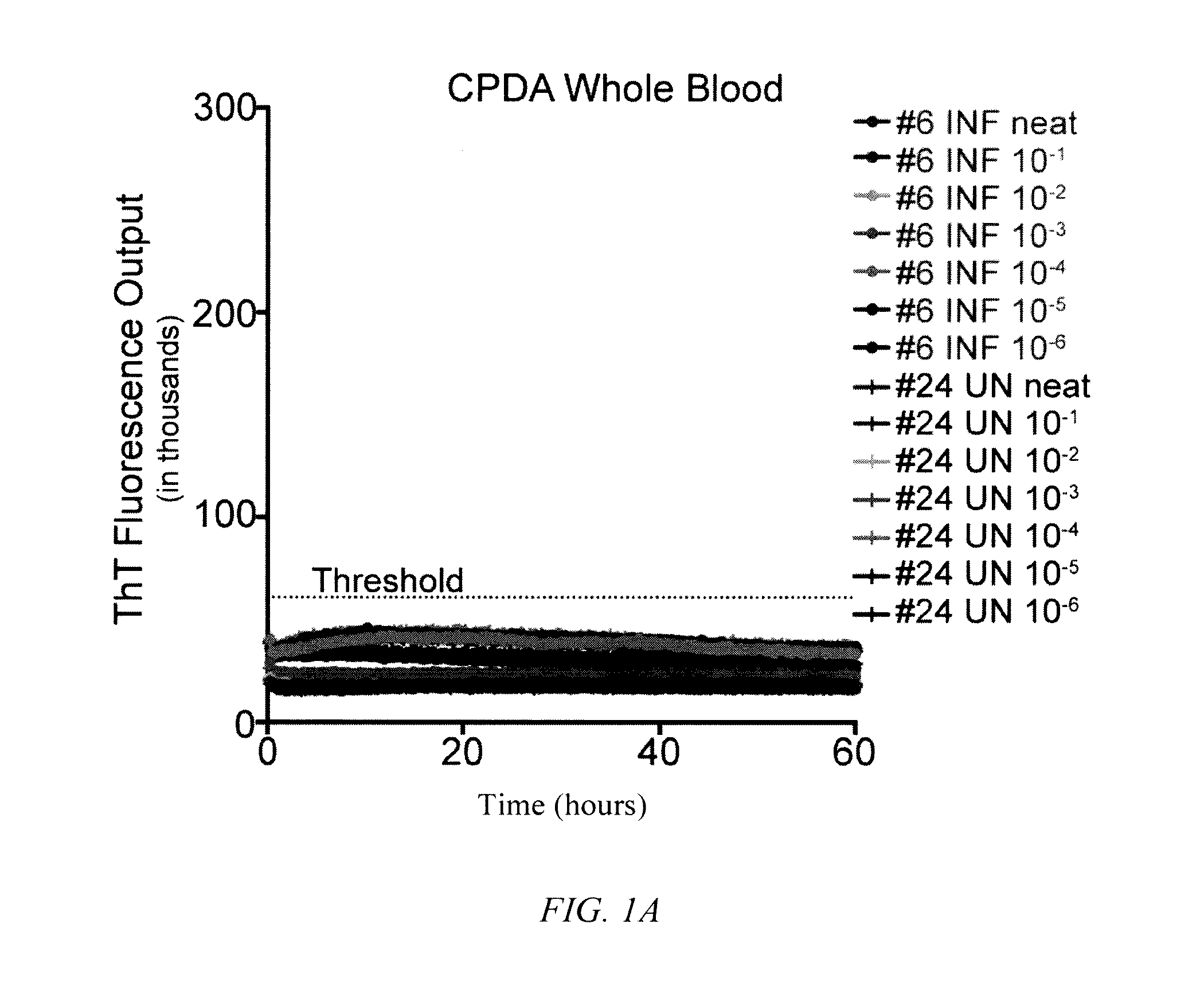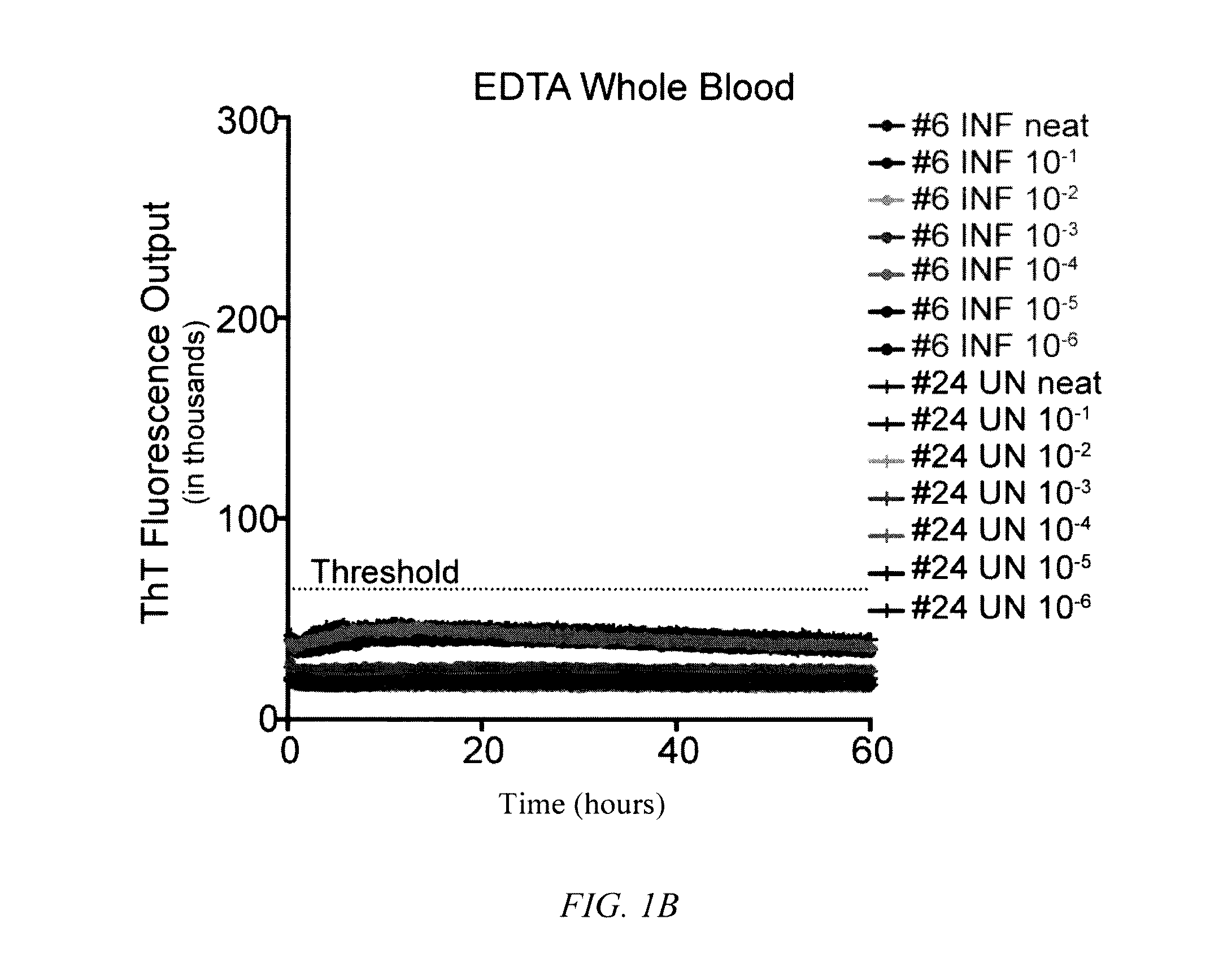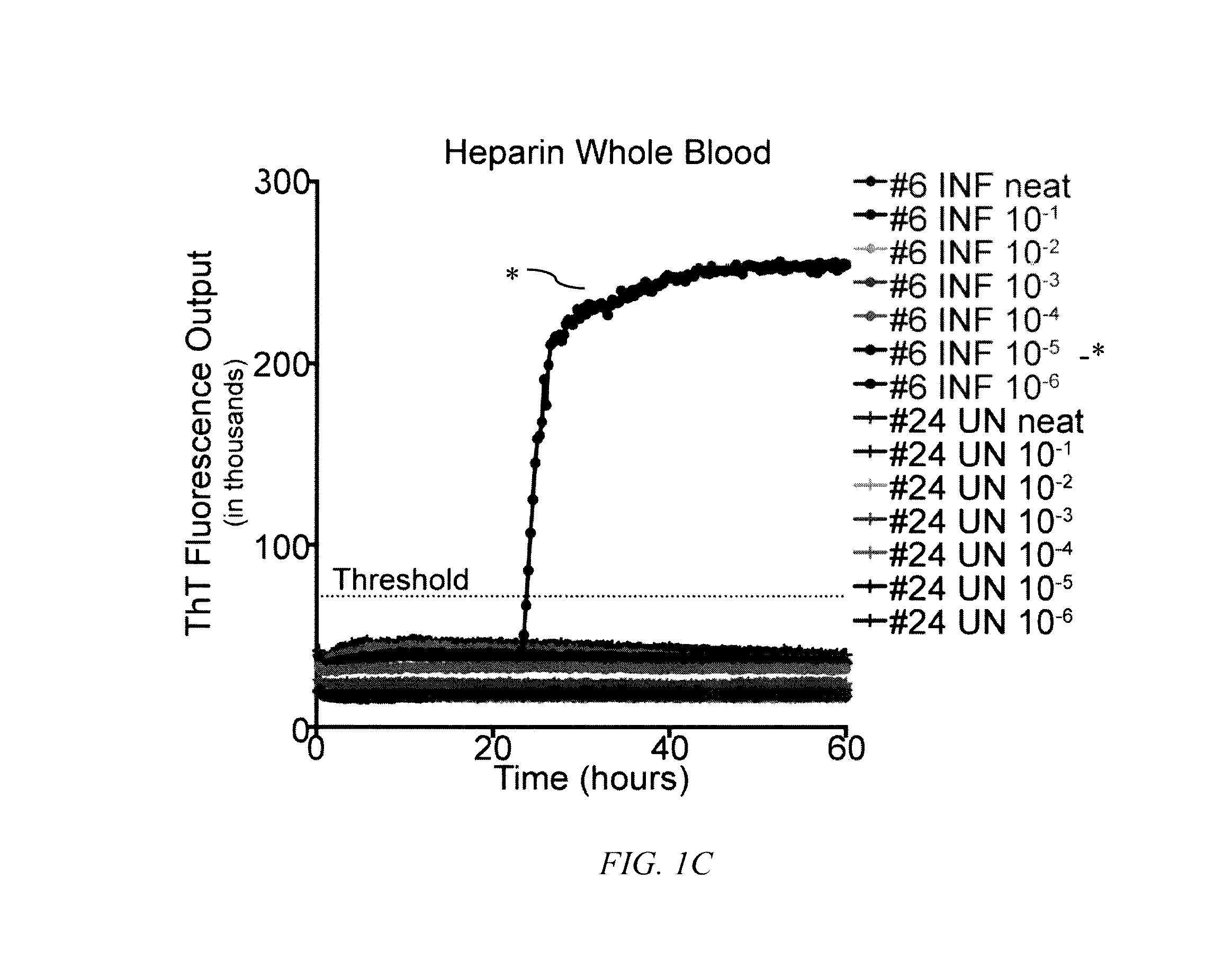In vitro detection of prions in blood
- Summary
- Abstract
- Description
- Claims
- Application Information
AI Technical Summary
Benefits of technology
Problems solved by technology
Method used
Image
Examples
example 1
RT-QuIC Analysis of Whole Blood Collected in Various Anticoagulants
[0062]To determine the influence of common blood preservation reagents in in vitro PrPD detection assays, we compared the ability of RT-QuIC to amplify CWD prions in cervid whole blood preserved in CPDA, EDTA or heparin. Samples were run in serial dilutions (100-10−6) in the RT QuIC assay to determine the optimal dilution for PrPD detection. While RT-QuIC PrPC converting activity was observed in heparinized blood from CWD-infected deer (½ replicates in one dilution; 10−5) (FIG. 1C), PrPC converting activity was not detected in CPDA (FIG. 1A) or EDTA (FIG. 1B) preserved blood from the same animal or any blood collected from sham-inoculated deer (FIGS. 1A-1C). All subsequent RT-QuIC analysis was conducted on whole blood harvested in heparin.
[0063]Precedence for hematogenous spread of prions via transfusion has been well established with various TSEs, including scrapie [Andreoletti, O., et al., PLoS Pathog, 2012. 8(6): ...
example 2
RT-QuIC Analysis of Fresh Versus Frozen Whole Blood
[0065]In order to determine if historical blood samples were adequately preserved to initiate PrPC converting activity in RT-QuIC, whole blood was collected from contemporary naïve and CWD112 infected white-tailed deer and compared as fresh versus frozen samples. Samples were processed in various dilutions ranging from undiluted to 10−6 to determine the optimal dilution for PrPD detection using frozen whole blood in the RT-QuIC assay. While PrPC converting activity was detected in fresh whole blood (FIG. 2A), blood that had been processed through the freeze-thaw procedure yielded higher and more consistent detection of prion converting activity (2 / 2 replicates in each of four dilutions) (FIG. 2B). PrPC converting activity was not observed in wells containing only substrate or naïve cervid blood. All subsequent RT-QuIC analysis included heparinized whole blood that had undergone four freeze-thaw cycles.
[0066]To assess the feasibility...
example 3
Effects of Sodium Phosphotungstic Acid Precipitation (NaPTA) on RT-QuIC PrPD Detection
[0067]NaPTA precipitation was applied to heparinized whole blood that had undergone freeze-thaw cell lysis in an attempt to increase both the sensitivity and specificity of the RT-QuIC assay. With the improved sensitivity and specificity provided by NaPTA pretreatment, reliable RT-QuIC results at a10−2 dilution of CWD-infected whole blood was demonstrated (FIGS. 3A-3D), while NaPTA treated whole blood from a naïve individual remained conversion free (FIGS. 3E and 3F).
[0068]Thus, all of the remaining RT-QuIC analyses of TSE prion converting activity in historical and contemporary samples were conducted with heparinized and freeze-thawed NaPTA-treated whole blood.
[0069]Components present in bodily fluids may interfere with or inhibit prion conversion and thus in vitro detection of the aberrant form of the prion protein [Barria, M. A., et al., Methods Mol Biol, 2012. 849: p. 199-212.]. Using immunopre...
PUM
 Login to View More
Login to View More Abstract
Description
Claims
Application Information
 Login to View More
Login to View More - R&D
- Intellectual Property
- Life Sciences
- Materials
- Tech Scout
- Unparalleled Data Quality
- Higher Quality Content
- 60% Fewer Hallucinations
Browse by: Latest US Patents, China's latest patents, Technical Efficacy Thesaurus, Application Domain, Technology Topic, Popular Technical Reports.
© 2025 PatSnap. All rights reserved.Legal|Privacy policy|Modern Slavery Act Transparency Statement|Sitemap|About US| Contact US: help@patsnap.com



